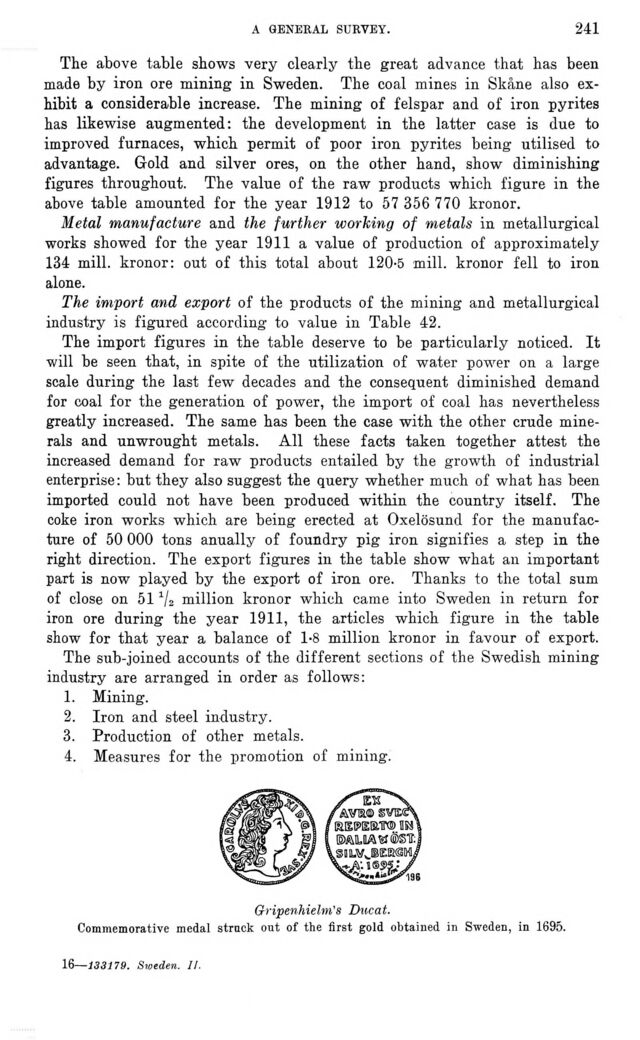
Full resolution (JPEG) - On this page / på denna sida - VI. Mining and Metallurgical Industry. General Survey. By C. Sahlin

<< prev. page << föreg. sida << >> nästa sida >> next page >>
Below is the raw OCR text
from the above scanned image.
Do you see an error? Proofread the page now!
Här nedan syns maskintolkade texten från faksimilbilden ovan.
Ser du något fel? Korrekturläs sidan nu!
This page has never been proofread. / Denna sida har aldrig korrekturlästs.
a general survey.
241
The above table shows very clearly the great advance that has been
made by iron ore mining in Sweden. The coal mines in Skåne also
exhibit a considerable increase. The mining of felspar and of iron pyrites
has likewise augmented: the development in the latter case is due to
improved furnaces, which permit of poor iron pyrites being utilised to
advantage. Gold and silver ores, on the other hand, show diminishing
figures throughout. The value of the raw products which figure in the
above table amounted for the year 1912 to 57 356 770 kronor.
Metal manufacture and the further working of metals in metallurgical
works showed for the year 1911 a value of production of approximately
134 mill, kronor: out of this total about 120-5 mill, kronor fell to iron
alone.
The import and export of the products of the mining and metallurgical
industry is figured according to value in Table 42.
The import figures in the table deserve to be particularly noticed. It
will be seen that, in spite of the utilization of water power on a large
scale during the last few decades and the consequent diminished demand
for coal for the generation of power, the import of coal has nevertheless
greatly increased. The same has been the case with the other crude
minerals and unwrought metals. All these facts taken together attest the
increased demand for raw products entailed by the growth of industrial
enterprise: but they also suggest the query whether much of what has been
imported could not have been produced within the country itself. The
coke iron works which are being erected at Oxelösund for the
manufacture of 50 000 tons anually of foundry pig iron signifies a step in the
right direction. The export figures in the table show what an important
part is now played by the export of iron ore. Thanks to the total sum
of close on 511/2 million kronor which came into Sweden in return for
iron ore during the year 1911, the articles which figure in the table
show for that year a balance of 1-8 million kronor in favour of export.
The sub-joined accounts of the different sections of the Swedish mining
industry are arranged in order as follows:
1. Mining.
2. Iron and steel industry.
3. Production of other metals.
4. Measures for the promotion of mining.
Gripenhielm’s Ducat.
Commemorative medal struck out of the first gold obtained in Sweden, in 1695.
16—133179. Sweden. //.
<< prev. page << föreg. sida << >> nästa sida >> next page >>